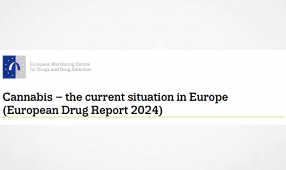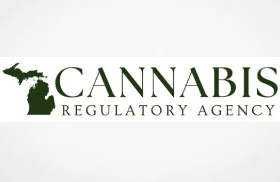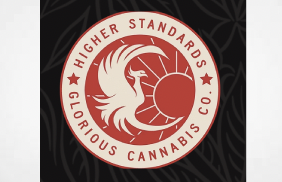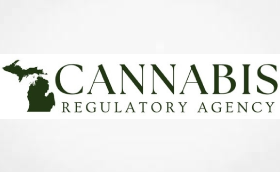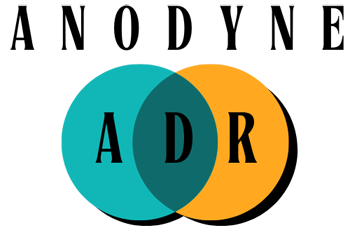Cannabis remains by far the most commonly consumed illicit drug in Europe. On this page, you can find the latest analysis of the drug situation for cannabis in Europe, including prevalence of use, treatment demand, seizures, price and potency, harms and more.
31813_enThis page is part of the European Drug Report 2024, the EMCDDA’s annual overview of the drug situation in Europe.
Last update: 11 June 2024
Understanding the policy and practice implications of changes in Europe’s cannabis market remains a priority
Cannabis remains by far the most commonly consumed illicit drug in Europe. National surveys of cannabis use would suggest that, overall, an estimated 8 % of European adults (22.8 million aged 15 to 64) have used cannabis in the last year. However, both the level of use and trends in use reported in recent national data appear heterogeneous (see Prevalence and patterns of cannabis use, below). At the same time, there is an ongoing debate on how best to respond to the use of this drug, with some countries modifying their regulatory approach. We are also seeing significant developments in the cannabis market. Taken together, this all means that there remains a pressing need to understand better the potential harms associated with different patterns of cannabis consumption and the implications this raises for policy and practice.
There is a need to better understand what responses are effective
Around 1.3 % of adults in the European Union (3.7 million people) are estimated to be daily or almost daily users of cannabis, and this is the group most likely to experience problems associated with this drug. Cannabis use can cause or exacerbate a range of physical and mental health problems, including chronic respiratory symptoms, cannabis dependence and psychotic symptoms. In addition, studies have found that regular cannabis use can be associated with poorer educational achievement and an increased risk of involvement with the criminal justice system. Problems are most associated with early onset of use, high-potency products and more regular and long-term patterns of use.
There remains, however, a need to understand better the kinds of problems experienced by cannabis users, as well as what are appropriate referral pathways and effective treatment options for those with cannabis-related problems. Cannabis is reported to be responsible for more than one third of all drug treatment admissions in Europe. This finding is difficult to interpret, in part because of the wide variety of interventions provided to cannabis users, which may include brief interventions or directive referrals from the criminal justice system. Further work is needed to understand better the kind of services offered to those with cannabis problems. However, the information that does exist would suggest that psychosocial treatments, such as cognitive behavioural therapy, are commonly offered and that e-health (online) interventions appear to be increasingly available.
Evaluating the risk of harm in this area is complicated by the apparently increasing range of cannabis-based products potentially available to consumers, which can include edibles, high-potency products and various derivatives. This diversity can have implications for the risk of an individual experiencing problems with their cannabis use and is therefore an area that requires greater research and regulatory attention.
Overall, the number of people reported as entering treatment for cannabis problems for the first time remained relatively stable until 2019, before declining during the pandemic, and not returning to pre-pandemic levels in most EU Member States by 2022 (see Treatment entry for cannabis use, below). A caveat here is that data quality and coverage issues mean that this observation must be interpreted with caution.
Seizures indicate that trafficking routes may be diversifying
Seizures of cannabis products overall continued to be at historically high levels in 2022, indicating the high availability of this drug (see Cannabis market data, below). However, the total quantity of cannabis resin seized in the European Union dropped significantly, largely due to a decrease in seizures reported by Spain. It is possible that this may reflect an adaptation in supply routes by those involved in trafficking cannabis resin from North Africa to Europe as a response to anti-trafficking measures taken by Spanish authorities. In this context, it is also interesting to note that since 2019 the volume of herbal cannabis seized has increased significantly in Spain. In 2022, Spain accounted for 69 % of all resin seized, 47 % of all herbal cannabis seized, and 81 % of the total number of cannabis plants reported seized in the European Union, underlining the significant role played by Spain, both as a transit country for cannabis trafficking and as a production area. However, it is important to note that significant cannabis production also takes place elsewhere in the European Union. Recent large seizures highlight the role Spain continues to play as a transit country for resin intended for the European market. In 2023, for example, Spanish authorities seized 22 tonnes of cannabis resin concealed in fake tomato packaging suspected of being destined for trafficking to France (see Figure 2.1).


Credit: Guardia Civil and Policía Nacional.
Although new products and forms of this drug are available, herbal cannabis and cannabis resin remain the most commonly available forms. While the quantities of cannabis resin seized in the European Union are greater than those of herbal cannabis, this is thought to reflect the greater vulnerability of cannabis resin to interdiction measures in cross-border trafficking, rather than availability or use. The information available suggests that herbal cannabis is the more commonly available form of the drug in most countries. Herbal cannabis may be grown near to its intended consumer market, and this may reduce the risk of detection. The potency of seized cannabis resin continued to increase in 2022, with the average resin sample now containing just under 25 % THC. This is very high by historical standards, potentially creating elevated health risks, particularly when associated with early onset of use. In contrast, the average potency of seized herbal cannabis has hovered at around 10 % THC for some years.
Some worrying new developments in the detection of cannabis seizures entering Europe may indicate that trafficking routes are diversifying and creating a growing challenge for interdiction efforts. These include, for example, the seizure of 4 tonnes of cannabis resin originating from Pakistan in the port of Antwerp, Belgium. Moreover, this is evidence that Morocco is not the only source of resin for the European cannabis market. Some EU Member States reported the trafficking of cannabis through postal systems and, increasingly, through commercial air travel, sometimes linked to the United States and Canada. There are indications that larger quantities of herbal cannabis may be shipped from North America via maritime routes. This, alongside the appearance of new forms of the drug, raises concerns that developments in regulated cannabis markets outside Europe may increasingly have implications for the availability of this drug within the European Union in the future.
Changing cannabis markets create new challenges for drug policies
The diversity of cannabis products available in Europe is increasing. This is true for the illicit drug market. It is also true for the consumer market, where products are appearing that contain low levels of THC, or other substances that may be derived from the cannabis plant such as CBD, or both. On the illicit drug market, the availability of high-potency extracts and edibles is of particular concern and has been linked to acute drug-toxicity presentations in hospital emergency departments. In addition, there are concerns that some products sold on the illicit market as cannabis may be adulterated with potent synthetic cannabinoids. For more information on these synthetic cannabinoids, see New psychoactive substances – the current situation in Europe.
Some semi-synthetic cannabinoids have also appeared recently on the commercial market in parts of Europe. These are substances thought to be produced from cannabidiol extracted from low-THC cannabis (hemp), not controlled under the international drug conventions. Probably the most commonly encountered semi-synthetic cannabinoid is hexahydrocannabinol (HHC), but also more recently hexahydrocannabiphorol (HHC-P) and tetrahydrocannabiphorol (THCP) have become commercially available in some EU Member States. These substances have been sold as purportedly ‘legal’ alternatives to cannabis, adding to the regulatory challenges in this area. While knowledge of the effects of HHC in humans is limited, concerns have been raised as studies have emerged, including some reports of links to psychosis. Between June 2022 and February 2024, Czechia’s Toxicology Information Centre recorded over 170 consultations on HHC. Many of the cases involved young people, including children, who had consumed edibles, such as gummy bears. HHC has been listed as a controlled drug in at least 18 EU Member States as of April 2024.
The European policy approach to cannabis is also becoming more diverse, as some EU Member States are considering or changing their policy approach to recreational cannabis use, creating various forms of access to cannabis resin and herb products. In December 2021, Malta legislated for home growing and cannabis use in private, alongside non-profit communal growing clubs. In July 2023, Luxembourg legislated to permit home growing and use in private, and in February 2024, Germany legislated to allow home growing and non-profit cannabis growing clubs. Czechia has also announced plans for a regulated and taxed distribution system. In addition, non-EU Switzerland has started to authorise pilot trials of sales or other distribution systems for specific residents in certain cities.
The Netherlands is also reviewing its approach in this area. The cultivation, sale and possession of cannabis remain criminal offences in the Netherlands. However, the sale of small quantities of cannabis, up to 5 grams, to people over the age of 18 in ‘coffeeshops’ that meet certain criteria has been tolerated for decades, with one of the policy objectives stated as separating cannabis consumers from the market for other substances. A concern with this approach is that cannabis is still necessarily supplied from the illegal market, and criminal groups therefore benefit from this trade. To address this issue, the Netherlands is piloting a model for a closed cannabis supply chain in 10 municipalities, with cannabis produced in regulated premises being made available for sale in cannabis coffeeshops.
More detailed information about national legislative approaches to cannabis can be found in the EMCDDA’s 2023 Cannabis laws in Europe: questions and answers for policymaking.
Key data and trends
Prevalence and patterns of cannabis use
- Based on the most recent surveys (Figure 2.2), last year cannabis use among the EU population aged 15 to 34 is estimated at 15.0 % (15.1 million), with males being typically twice as likely to report use as females. Among 15- to 24-year-olds, an estimated 18.6 % (8.8 million) used cannabis in the last year, and 9.7 % (4.6 million) used the drug in the last month. It is estimated that around 1.3 % (3.7 million) of adults (aged 15 to 64) are daily or almost daily cannabis users (that is, using the drug on 20 days or more in the last month). Among 15- to 34-year-olds, an estimated 2.0 % (2.0 million) are daily or almost daily cannabis users. Around three quarters of adult users (aged 15 to 64) are male and the majority (54 %) are under 35.
- Trends in cannabis use at the national level appear mixed. Of the countries that have produced surveys since 2021 and reported confidence intervals, 3 reported higher estimates, 8 were stable and 2 reported a decrease compared with the previous comparable survey.
- The 2021 European Web Survey on Drugs found that herbal cannabis was used by 95 % of respondents who used cannabis in the last 12 months, compared with 32 % for resin, 25 % for edibles and 17 % for extracts. This data source also indicates that consumers may be commonly using more than one form of this drug.
This data explorer enables you to view our data on the prevalence of cannabis use by recall period and age range. You can access data by country by clicking on the map or selecting a country from the dropdown menu.
